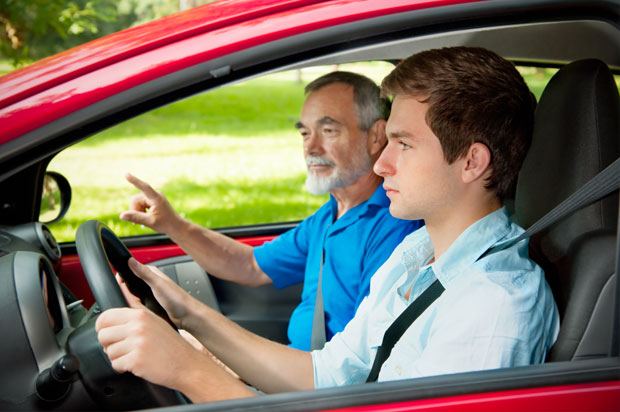How Do I Move Off in a Car? A Step-by-Step Guide for New Drivers
Mastering the skill of moving off from a parked position is essential for every new driver. Transitioning smoothly into moving traffic requires coordination, observation, and timing. Here’s a detailed step-by-step guide to help you move off confidently and safely.
Step 1: Preparation – Setting Up to Move Off
- Adjust Your Seat and Mirrors: Before anything, make sure your seat and mirrors are adjusted to give you clear visibility of the road and surroundings. Comfort and visibility are key.
- Fasten Your Seatbelt: Ensure you and any passengers have fastened seatbelts before moving off.
- Check Your Surroundings: Take a moment to check for any approaching vehicles, cyclists, or pedestrians.
Step 2: Engage the Clutch and Select First Gear
- Press the Clutch Fully: With your left foot, press the clutch pedal down all the way to the floor.
- Shift into First Gear: Move the gear lever into first gear (or second if moving downhill, as it may provide smoother control).
Step 3: Apply Gentle Acceleration
- Press the Accelerator: With your right foot, gently press the accelerator (gas pedal) to increase the engine’s revolutions to around 1500rpm. Use the rev counter to monitor this if available.
- Hold at 1500rpm: Keeping the engine at a steady 1500rpm will help ensure a smooth start and prevent stalling.
Step 4: Find the Biting Point
- Slowly Release the Clutch: Begin to lift your left foot off the clutch slowly until you reach the “biting point.” The biting point is when you feel the car’s front end pull slightly or the engine note changes, indicating readiness to move.
- Hold Steady at the Biting Point: Keep your foot steady at the biting point, maintaining the same amount of gas to prevent stalling. This step may take a few tries to get used to.
Step 5: Observation and Signaling
- Check Your Mirrors: Before moving, look at both side mirrors and the rear-view mirror to assess traffic behind and beside you.
- Signal Your Intent: Indicate with the appropriate signal (left or right, depending on your position) to alert other road users that you intend to move.
- Blind Spot Check: Turn your head to check over your shoulder and ensure no vehicle, cyclist, or pedestrian is in your blind spot.
Step 6: Releasing the Handbrake and Moving Off
- Release the Handbrake: While holding the clutch at the biting point and maintaining gas, release the handbrake. This releases your car from its stationary position.
- Gradually Increase Acceleration: As you release the handbrake, gently increase the gas to build momentum. Do this gradually for a smooth take-off.
- Coordinate with Clutch Release: Simultaneously release the clutch slowly as you increase acceleration. Moving both feet in sync is key to prevent the car from jerking or stalling.
Step 7: Steer Away from the Curb
- Slightly Turn the Steering Wheel: As you start moving, gently steer away from the curb to position yourself correctly in the lane.
- Maintain Proper Distance from the Curb: Practice keeping a safe distance from the curb to avoid drifting too close or too far into the road.
Step 8: Check Mirrors and Cancel the Signal
- Check Mirrors Again: Once you’ve moved away from the curb and are aligning with traffic, check both side mirrors to ensure equal spacing on each side.
- Cancel Your Signal: If your indicator hasn’t automatically switched off, manually cancel it to avoid confusing other drivers.
Additional Tips for Moving Off Smoothly
- Avoid Stalling: For smooth movement, make sure you’re holding enough gas at the biting point, especially in petrol cars. Diesel engines tend to have a bit more tolerance for low-speed movement, making stalling less frequent.
- Practice Clutch Control: Mastering clutch control is crucial for a smooth move-off. Practice releasing the clutch over 3-5 seconds while maintaining gas to avoid sudden jerks.
- Smooth Traffic Integration: When moving off, aim to blend into traffic without causing vehicles behind to brake suddenly. During driving tests, seamless reintegration into traffic is essential and can help avoid minor or serious faults.
Common Situations and Best Practices
- Moving Off on a Hill: If starting on a hill, you may need additional gas and a slightly higher biting point to prevent rolling back. Practicing hill starts is beneficial.
- Quick Start Situations: In some traffic scenarios, you may need to move off quickly. In these cases, hold the clutch at the biting point and add extra gas, then release the clutch more swiftly but controlled.
- Gear Usage: Initially, you’ll use first and second gear. Shift to second gear after a few seconds of movement to keep engine revs within an efficient range and maintain smooth speed.
Practicing Moving Off with Confidence
As you practice moving off, remember that perfecting this skill takes time. Maintaining the right speed, gear, and clutch control will soon become second nature with experience. Consider taking a few lessons with a certified driving instructor if you’re just starting, as they can provide guidance, demonstrate techniques, and help you practice moving off under various traffic conditions.
Quick Reference Guide: How to Move Off in a Car
- Preparation: Adjust mirrors, fasten seatbelt, check surroundings.
- Clutch and Gear: Fully press clutch, select first gear.
- Apply Gas: Press the accelerator to 1500rpm.
- Find the Biting Point: Release clutch until you feel a pull.
- Observe and Signal: Check mirrors, signal, and check blind spot.
- Release Handbrake: Gradually release handbrake.
- Accelerate and Steer: Increase gas and steer gently away from the curb.
- Check Mirrors and Cancel Signal: Ensure spacing and turn off indicator.
Mastering moving off is essential for new drivers, building both safety and confidence on the road. Following this guide and practicing frequently will help you make smooth, coordinated transitions from parked to moving positions in various driving situations.


